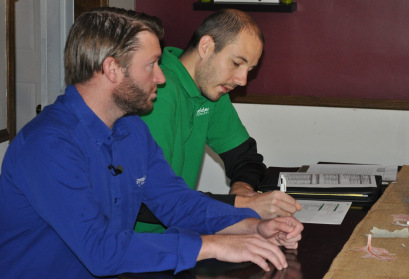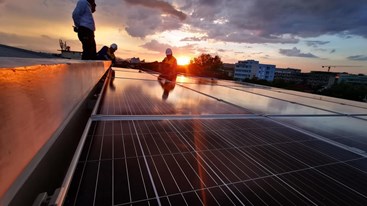Friday, 26/04/2024 | 10:07 GMT+7
One goal of Holland’s Home Energy Retrofit Pilot Program is discovering what energy savings are possible in Holland’s housing stock. Another is figuring out an efficiently plan that would make possible home retrofits for hundreds of houses a year.
On both accounts, the pilot is teaching some lessons. And according to the pilot’s energy engineering contractor, the news is generally good, that a plan could be created to bring energy retrofits to Holland on a wide scale.
“We did not know if there was going to be viability or feasibility walking into this project,” said Ty Miller, smart city manager with Schneider Electric, the contractor for the study. “We didn’t know what the housing stock was going to be like, what we were going to find there. There are things that make it mRR33HOME VISITore challenging than we anticipated, primarily being a (hazardous materials) issue, and things that make it more likely to be executable than anticipated – the energy savings we found.”
Miller last week reviewed “lessons learned” from the pilot for the Holland Home Energy Retrofit Task Force. The task force is one of handful of city-appointed groups seeking to implement Holland’s Community Energy Plan. That plan is designed to slash the city’s cost for and dependence on energy over the next 40 years.

One element of the plan calls for retrofitting 200 to 300 homes a year for two decades as part of reducing city energy consumption by 50 percent. Retrofitting involves remedies such as better insulation, heating and air conditioning equipment improvements, sealing up homes, and efficient lights and appliances.
The pilot found the potential for energy savings is good. For the 25 pilot homes, energy audits and renovation cost estimates showed average per-home expense of $14,087 for average annual energy savings of $865 – a 32 percent savings in energy use.
“Overall we’re very happy with the energy savings we found in the housing stock we looked at when we ran the models,” Miller said. “It’s really good data. We’re encouraged by the viability of the energy savings and the housing stock that’s here.”
But the pilot also offered “lessons learned” that will need to be addressed in a large-scale project. Those include need for a more efficient process with fewer visits to each home and a program that is a more defined, with fewer “home improvement project” complications. They also include using the on-bill financing, recently made law in Michigan thanks to Holland’s efforts. It simplifies the loan process and allows payback through the home’s utility account.
But the biggest challenge Miller referenced is hazardous materials. About half of the 25 pilot homes – designed to be a cross-section of city homes – were found to have either knob and tube wiring or asbestos. Fixing those issues complicates the retrofit process. A separate contractor must be scheduled, and the cost, an estimated $1,500 average to fix either, reduces the chances that energy savings alone can finance the retrofit.
Miller noted the sample is too small to say that half of Holland’s housing will have those issues, but enough showed up in the pilot to make it a concern. “It’s going to be a big hurdle when we start talking about deeper retrofits,” he said.
But the bottom line, Miller concluded, is that he thinks a large-scale project is very doable in Holland.
“It seemed we have a lot of projects out there that make sense to do that have less than 15 years of payback, just off energy savings,” and not including payback benefits such as increased home value and better comfort and safety.
Anh Tuan


.png?w=367&h=206&mode=crop)
.jpg?w=367&h=206&mode=crop)




.jpg?w=367&h=206&mode=crop) Energy efficiency and conservation usage is an important aspect of the national energy development strategy
05/03/2024
Energy efficiency and conservation usage is an important aspect of the national energy development strategy
05/03/2024
 Challenges and Opportunities to promote energy efficiency market in Vietnam
Challenges and Opportunities to promote energy efficiency market in Vietnam
 The Ministry of Industry and Trade requests government agencies to coordinate in organizing Earth Hour 2024
The Ministry of Industry and Trade requests government agencies to coordinate in organizing Earth Hour 2024
 Consultation on Energy Efficiency Boiler Catalogue and Wood Drying Guideline
Consultation on Energy Efficiency Boiler Catalogue and Wood Drying Guideline
 Son Ha Co., Ltd, applies energy efficiency and conservation measures
Son Ha Co., Ltd, applies energy efficiency and conservation measures
.png?w=367&h=206&mode=crop) Request for expression of interest - C2.1.13: Capacity Building on energy efficiency policies development
Request for expression of interest - C2.1.13: Capacity Building on energy efficiency policies development
 Phuc Kien Co., Ltd., is effectively implementing energy-saving measures
Phuc Kien Co., Ltd., is effectively implementing energy-saving measures
 Request for expression of interest - C2.1.12: Independent monitoring of safeguards implementation
Request for expression of interest - C2.1.12: Independent monitoring of safeguards implementation